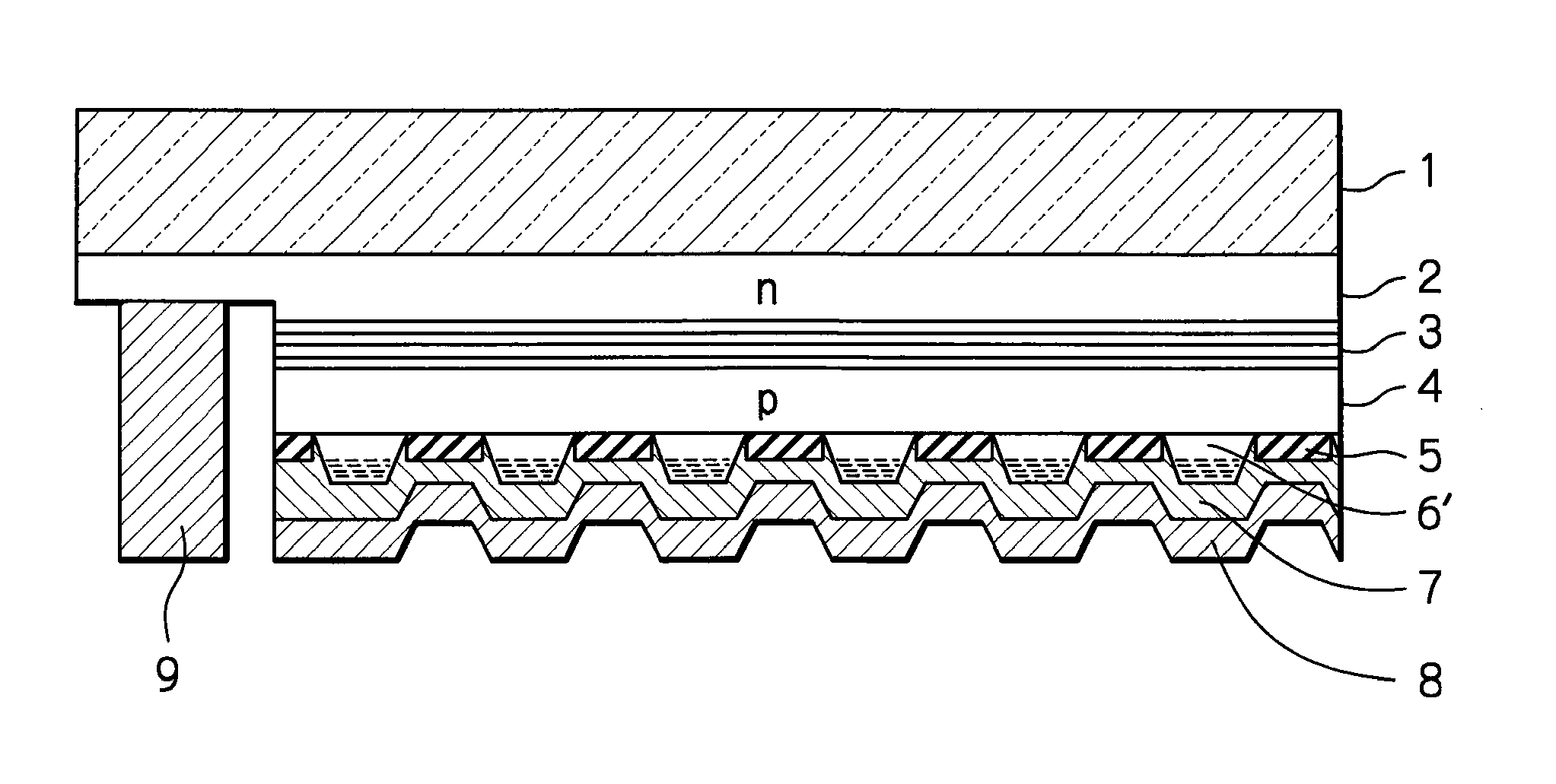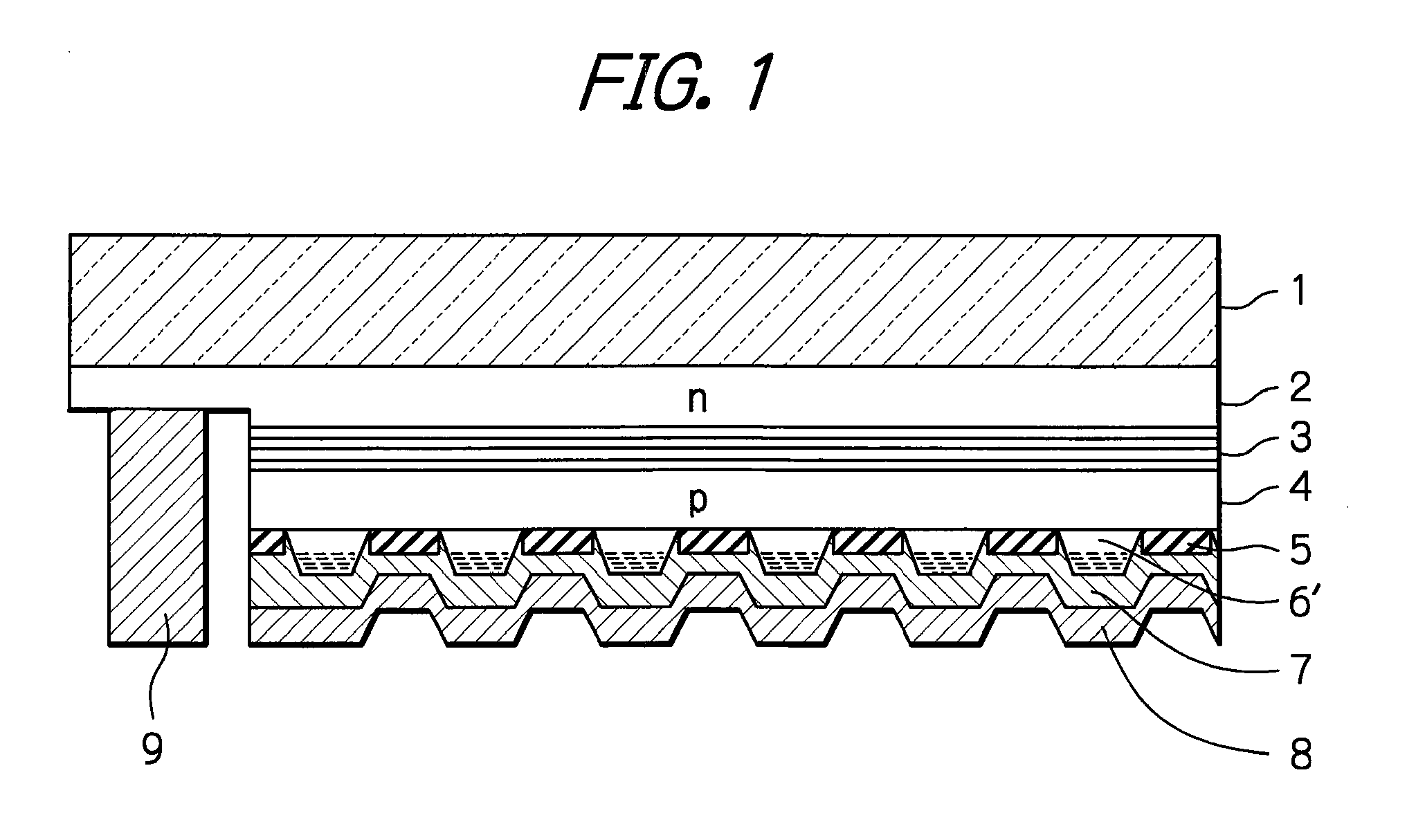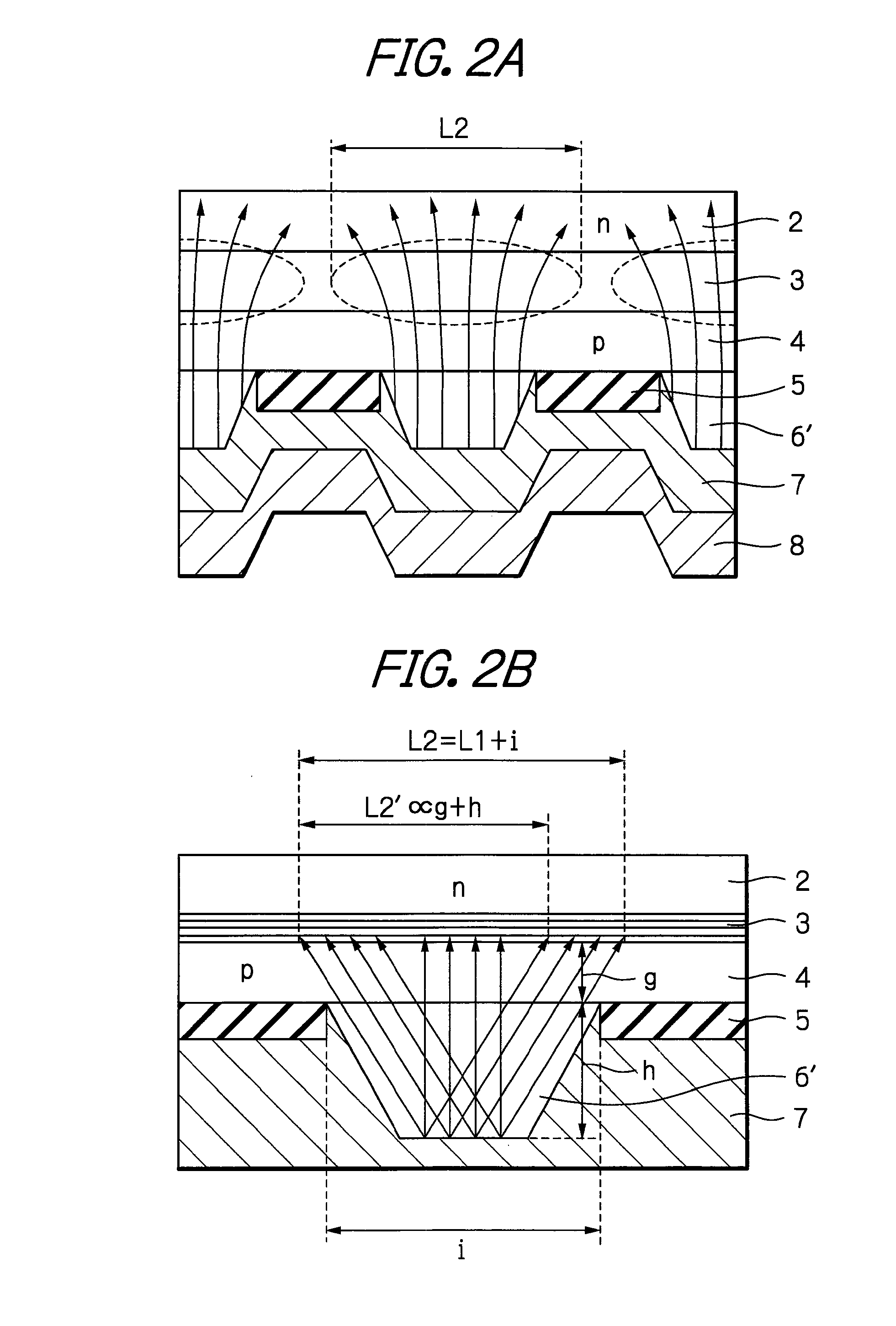Optical semiconductor device having uneven semiconductor layer with non-uniform carrier density
a semiconductor layer and semiconductor technology, applied in the field of optical semiconductor devices, can solve the problems of increasing manufacturing costs, large incident angled light cannot be extracted from the light extracting face, etc., and achieve the effects of improving light output characteristics, increasing current-spreading length of active layers, and reducing drive voltag
- Summary
- Abstract
- Description
- Claims
- Application Information
AI Technical Summary
Benefits of technology
Problems solved by technology
Method used
Image
Examples
first embodiment
[0029]In FIG. 1, which illustrates the optical semiconductor device according to the presently disclosed subject matter, an uneven trapezoidal-sectional p-type GaN layer 6′ which has a non-uniform carrier density is provided instead of the uneven trapezoidal-sectional p-type GaN layer 6 of FIG. 10 which has a uniform carrier density. In the uneven trapezoidal-sectional p-type GaN layer 6′, the carrier density is higher at the tip portion of one trapezoidal shape than at the bottom portion thereof. In other words, the concentration of p-type impurities is increased stepwise or continuously from the bottom portion of one trapezoidal shape to the tip portion thereof, and accordingly, the carrier density is increased stepwise or continuously from the bottom portion of one trapezoidal shape to the tip portion thereof.
[0030]In order to operate the optical semiconductor device of FIG. 1, a drive voltage is applied between the reflective metal layer (p-side electrode layer) 8, i.e., the tra...
second embodiment
[0082]In FIG. 9, which is a cross-sectional view illustrating the optical semiconductor device according to the presently disclosed subject matter, an upper / lower electrode type (vertical type) optical semiconductor device is illustrated. That is, the growing sapphire substrate 1 of FIG. 1 is removed. Also, a conductive support body 21 having good thermal conductivity is adhered by an adhesive layer 22 to the reflective metal layer 8. Further, an n-side electrode layer 23 instead of the n-side electrode layer 9 of FIG. 1 is provided on the n-type GaN layer 2.
[0083]In order to operate the optical semiconductor device of FIG. 9, in the same way as in the optical semiconductor device of FIG. 1, a drive voltage is applied between the reflective metal layer (p-side electrode layer) 8, i.e., the transparent electrode layer 7 via the conductive support body 21 and the n-side electrode layer 23 to inject currents into the active layer 3. In this case, in the uneven trapezoidal-sectional p-t...
PUM
 Login to View More
Login to View More Abstract
Description
Claims
Application Information
 Login to View More
Login to View More - R&D
- Intellectual Property
- Life Sciences
- Materials
- Tech Scout
- Unparalleled Data Quality
- Higher Quality Content
- 60% Fewer Hallucinations
Browse by: Latest US Patents, China's latest patents, Technical Efficacy Thesaurus, Application Domain, Technology Topic, Popular Technical Reports.
© 2025 PatSnap. All rights reserved.Legal|Privacy policy|Modern Slavery Act Transparency Statement|Sitemap|About US| Contact US: help@patsnap.com



